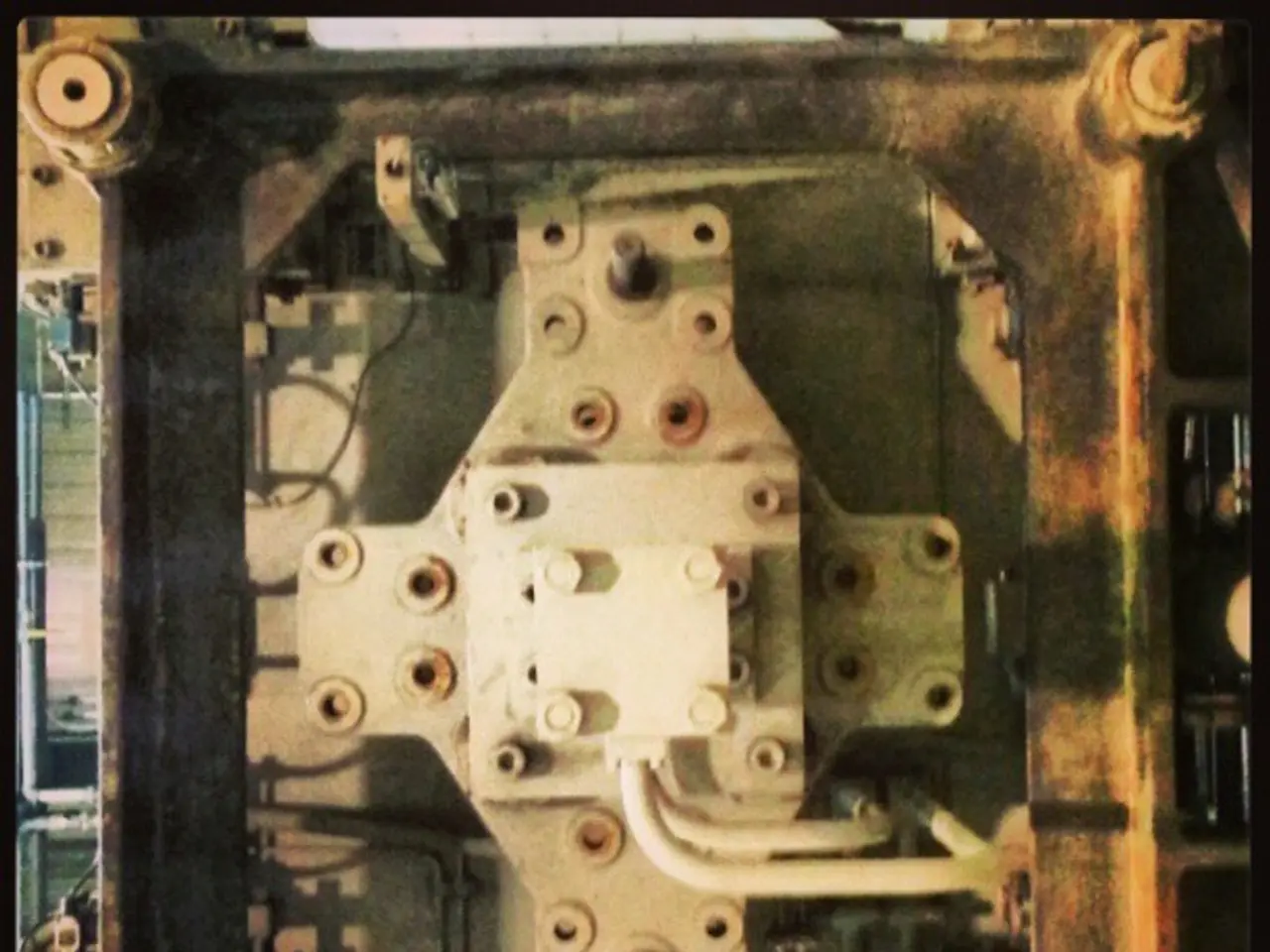Groundbreaking 3D X-ray images of magnesium alloys promise to transform the future of lightweight car design.
Unraveling the Mysteries of Magnesium Alloys: A Step Towards Stronger, Lighter Vehicles
A groundbreaking study by researchers at the University of Michigan sheds light on the behavior of magnesium alloys under mechanical stress, offering fresh insights that could revolutionize the automotive industry [1].
Magnesium, being 30% lighter than aluminum and 75% lighter than steel, presents a significant opportunity for reducing vehicle weight, thereby enhancing fuel efficiency and electric vehicle range [1][2]. However, its broader use has been limited due to its unpredictable behavior under strain.
Every metal's crystalline structure determines its response when pulled or bent. Magnesium, with its hexagonal crystal structure, differs from cubic metals like aluminum or iron. Under stress, magnesium alloys do not deform as smoothly because they have fewer slip systems in their hexagonal lattice. Instead, they form microscopic regions known as deformation twins inside their grains [1].
In their experiments, the U-M team found that all three types of twins formed at "triple junctions," where three crystals meet. Defects always appeared where the twin touched another crystal. The researchers used a combination of advanced techniques, including small-scale CT scanning to map crystal grain orientation, imaging at the European Synchrotron Radiation Facility in France, and dark-field X-ray microscopy to capture changes in unprecedented detail [1].
The sample was stretched under three different loads, typical of forces in automotive parts. These high-resolution images mark a first step towards tailoring magnesium alloys to be both more ductile and more stable [1]. The researchers plan to capture these changes in real time during future experiments.
The study, which appears in the journal Science, offers a promising path towards understanding and controlling magnesium's behavior under strain. This could help engineers design cars that are stronger, lighter, and more fuel-efficient.
The research was funded by the U.S. Department of Energy, highlighting the importance of ongoing efforts to unlock the full potential of magnesium alloys in the automotive sector. The discovery could make magnesium a mainstream material for vehicle production, potentially leading to cost reductions due to its light weight [3].
However, challenges remain. Magnesium alloys have inherently poor formability at room temperature, making processes like rolling and shaping difficult for large-scale manufacturing. Research is ongoing to develop new alloys and rolling techniques that improve formability to enable wider automotive use [2].
Moreover, certain alloying elements, such as gadolinium (Gd) and zinc (Zn), improve the strength and creep resistance of magnesium alloys, helping them maintain performance under automotive operating temperatures. Rare-earth additions can stabilize phases to improve performance at temperatures up to about 150°C, suitable for some vehicle components like engine cradles [4][5].
Despite these challenges, the study represents a significant leap forward in our understanding of magnesium alloys. As research continues, we move closer to realizing the full potential of these lightweight materials in the automotive industry.
[1] Science.org [2] Autodesk.com [3] UofMichiganNews.org [4] SpringerLink.com [5] AIP.scitation.org
- The study's findings on magnesium alloys in the automotive industry may pave the way for technological innovation in robotics, mechanical engineering, and transportation, as it offers insights to design vehicles that are both stronger and lighter.
- The investigation's success in capturing changes in magnesium alloys under strain could incentivize finance industry investments in the science sector, encouraging more research and development in the field.
- As the industry moves towards a future dominated by electric and autonomous vehicles, understanding the behavior of magnesium alloys under mechanical stress could be a game-changer in the realization of highly efficient automotive technology.
- Collaborative efforts between the automotive, mechanical engineering, and financial sectors may flourish, as the potential cost savings and fuel efficiency improvements from magnesium alloy adoption become more apparent.
- The scope of this research reaches beyond the automotive sector, as its findings could have far-reaching implications for diverse industries that rely on technology and science, such as aerospace or industrial machinery.




